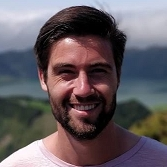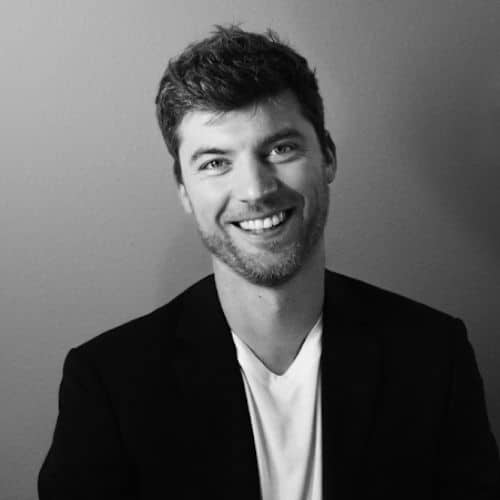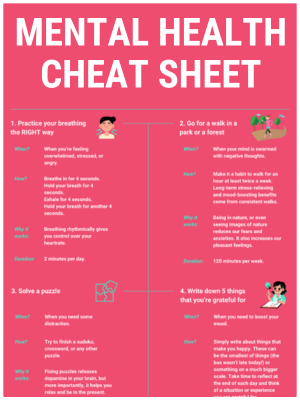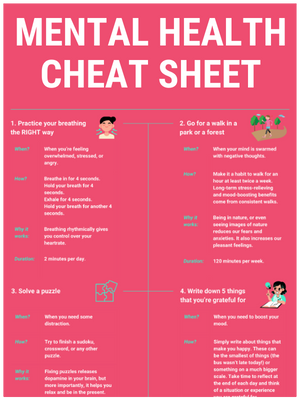Contents
Hello! Who are you?
Hey there! My name is Juan Manuel Fernandez, and I’m a former professional basketball player turned life coach. My journey has taken me from my childhood home in Argentina to college basketball at Temple University in Philadelphia, a decade-long adventure in Europe, and finally settling down in sunny Orlando, FL, where I share my life with my wonderful wife and two amazing children.
Growing up, basketball was my life. My father was a professional basketball player in Argentina, and my brother overcame incredible odds, despite being paralyzed from the waist down at just one-year-old, to become a world-class wheelchair tennis athlete. Inspired by my family’s dedication to sports, I pursued my dream of playing college basketball and eventually turning professional, just like my father.
As a teenager, I prioritized basketball above everything else. When I was 18, I took a big leap and left Argentina to study Broadcast Journalism and play college basketball at Temple University. My time at Temple was transformative. It made me more independent and mature, and our team’s success on the court led me to the next chapter of my life as a pro athlete.

After college, I signed a contract with Olimpia Milano, one of the top basketball teams in Italy and Europe. I moved to Italy with my girlfriend at the time and future wife, and we soon started our family there. Our life seemed perfect, like something out of a dream.
However, reality hit me around my fourth season in Europe. I began experiencing signs of burnout, and the constant distance from my extended family took its toll. I noticed that I didn’t enjoy going to practice and competing as much as I once did, and I started experiencing drastic mood swings.
At first, I dismissed these feelings and took them as normal ups and downs of a sports season. But as time went on, I began to realize (without admitting it) that I just wasn’t enjoying the game anymore.
Looking back, I can share my struggles more openly now that over a year has passed since retirement and I’ve found my new purpose in life coaching. The journey has been anything but easy, and I discovered that many people around me were grappling with similar challenges along the way. That’s what motivated me to make a difference.
Through my coaching practice, I guide others to embrace change and navigate life’s transitions, guiding them toward their true calling and helping them find the courage to chase their dreams. After all, we spend most of our lives working, so why not do something we truly love? Ironically, I found my purpose in helping others discover theirs.
My mission is to empower people to take on a journey of self-discovery, making decisions that align with their values, passions, and priorities. My story is one of transformation and growth, and I’m now at a place where I want to inspire others to take the leap towards a more fulfilling life, avoiding some of the mistakes I made along the way, which I’ll dive into next.
💡 By the way: Do you find it hard to be happy and in control of your life? It may not be your fault. To help you feel better, we’ve condensed the information of 100’s of articles into a 10-step mental health cheat sheet to help you be more in control. 👇
What is your struggle and when did it start?
Back then, I struggled to open up about the burnout and depression that weighed me down, and although I’m now much more open and acceptant of what I went through, it’s still a sensitive topic for me.
I believe that the pressure I put on myself to excel in basketball from such a young age ultimately took a toll on my mental health. I was only 12 or 13 when I decided to become a professional basketball player, which meant making sacrifices that other kids weren’t making. I gave up parts of my childhood, and though it didn’t seem like a problem at the time, it eventually led to my burnout.

After my fourth or fifth season in Europe, the low periods began lasting longer, while the good times seemed fleeting. I dreaded going to practice and eventually no longer found joy in competing. This was hard to accept because basketball had been my life – it had given me everything.
It took me to college, connected me with my future wife and family, and even shaped my identity. Realizing that the sport I once loved was no longer fulfilling me was devastating.
The COVID pandemic only made things worse. Lockdowns and travel restrictions in Italy made it incredibly hard to cope with being so far away from our extended families. It had been four years since I last visited Argentina, and missing important events, including my brother’s wedding, only added to the stress and depression I was feeling.
The final three months before my retirement was when the red flags became impossible to ignore. On my days off, I’d lock myself in my room, finding comfort in the darkness and looking to recover (unsuccessfully) from sleepless nights.
I couldn’t be there for my wife and kids, and I would cry in my car daily on my way to practice. I would leave earlier for the gym so I could take some time to compose myself before anyone there noticed. I didn’t want my struggles to affect the team.
How did this struggle make you feel at your worst moments?
At my lowest point, I found myself wishing for an injury that would sideline me, just to escape the emotional turmoil I was experiencing. I couldn’t focus during practices and at home, leaving me unable to fully engage in anything. It was as if my body was going through the motions, and my mind had detached itself.
One day, my heart began racing during practice and I had to step out. Though the team doctors attributed it to post-COVID symptoms, deep down, I knew it was depression and anxiety taking hold. But I hid behind their diagnosis, afraid to reveal my true struggles.
Only one of my teammates, a close friend, sensed that something was happening. We spent more time together outside of basketball, which allowed him to pick up on the subtle changes in my behavior, I believe.
One day, he invited me for coffee, and it was during that conversation that I broke down in front of someone outside my family and inner circle for the first time. I tried to explain what I was going through, and he assured me that he and the team would support me if I chose to retire for the sake of my family and my mental health. This conversation helped to start turning the situation around.
During this period of depression and burnout, I found an unsettling sense of comfort in hiding within those negative feelings. It seemed easier to remain in that dark place rather than admit that I needed to take responsibility for my mental well-being, ask for help, and start making changes to overcome my struggles.
For a long time, I wasn’t prepared to face the task of pulling myself out of the emotional hole I was in, and looking back, I don’t think I would have taken on that task if it wasn’t for the help of many people around me.
They say that we only change when the fear of staying the same outweighs the fear of change itself. That resonates with my experience, as I remained complacent in my misery until I reached a tipping point where the desire for a better life surpassed the fear of confronting my demons and taking action to transform my situation. Only then was I able to take on the journey of healing and growth that ultimately led me to where I am today.
👉 Share your story: Help thousands of people around the world by sharing your own story. We would love to publish your interview and have a positive impact on the world together. Learn more here.
Was there a moment when you started to turn things around?
The turning point arrived one night when, after constantly trying to get me to open up about my feelings, my wife managed to unearth the thoughts I had been having about wishing for an injury to escape the emotional pain.
Concerned, she called my agent, who in turn called me the next day. His words literally began my journey toward healing. He said, “Juan, you’re not stuck. Your contract doesn’t tie you to these feelings. If you need to step away, there’s always a way out.”
That statement brought me a sense of freedom and relief that I had not had in months. It may sound intuitive now, but my emotions literally took me to believe that I was chained, that I was stuck in those circumstances, and that there was no escape for me.
My agent reassured me that my contract didn’t chain me to my situation and that my teammates and coaches would understand – which they ultimately did. Until that moment, I had felt a heavy weight on my chest, like a big rock inside my torso.
Although the weight didn’t disappear instantly, it began to lift after our conversation. That was when I decided to retire from basketball. My wife fully supported me, and together we prepared to face the uncertainty of the significant life changes ahead.
On January 23, 2022, I played my final game as a professional basketball player. Two days later, I had the most challenging meeting of my life with the team’s management and coaching staff.

I bared my soul, speaking openly and vulnerably about my struggles and the impact on my mental health and family. I felt like I had to prioritize my well-being and align my actions with my values. This meant acknowledging that basketball no longer held the same place in my life and that it was time to let go.
For months, I was miserable. However, the relief I felt after those difficult conversations were indescribable. Freeing myself from the basketball routine brought me a sense of peace that I hadn’t experienced in years. I knew this decision would break my heart, but it would help heal my soul.
Retirement was like a bad breakup with a long-time love, and I had to give myself time to grieve the loss. My therapist helped me understand that grieving was natural and necessary for moving forward. Only after allowing myself this time to heal could I truly embrace the next chapter of my life.
What steps did you take to overcome your struggle?
Reflecting on my journey through burnout and depression, I realize that the support of those closest to me was key in overcoming my struggles. My wife’s intervention, my family’s understanding, particularly my parents and my brother, and my agent’s guidance all played crucial roles in my recovery.
But the real breakthrough came when I embraced vulnerability and opened up about my struggles. In the competitive world of sports, revealing weakness is often perceived as a liability. It took courage and time for me to let go of this mindset and recognize the strength in vulnerability.
During emotional and mental turmoil, our instinct may be to close off our feelings, but it’s actually the opposite that helps us break free from the downward spiral. Sharing my experiences, being honest with myself, and seeking help from others opened up new paths for healing and growth.
My teammate’s willingness to recognize that something was off and start a conversation also taught me a valuable lesson: always pay close attention to the people around you and be there for them when they need you.
Opening up and asking for help can be incredibly challenging when dealing with mental health issues, so a simple check-in from someone you trust can make all the difference. This mentality of service became the cornerstone of my current coaching practice, focused on serving those who need a supportive hand.
Throughout my journey, I’ve experienced both the pain of personal struggle and the satisfaction of helping others overcome similar challenges as a life coach. If you’re suffering from burnout, depression, anxiety, or any similar feeling, I understand how isolating it can be.
It’s tempting to close off and avoid confronting your emotions, but true change begins with that first step: opening up. Embrace your vulnerability and share your struggles because that’s the only way to open the door and let help in.
And if you find yourself in a position to help others, be observant and adopt a mindset of genuine service. Look for signs and don’t be afraid to check in with someone who may be struggling. A simple and genuine conversation has the potential to change someone’s life.
What practices or habits have you incorporated into your daily life to help maintain your mental well-being?
In order to maintain my mental well-being, I have incorporated the T.I.M.E.S. framework, developed by Jay Shetty, into my daily life. This framework consists of five key practices:
T – Thankful
Each week, I make it a point to send a heartfelt ‘thank you’ message to someone who has supported me on my journey. I do this at least once a week, ensuring that each message is specific and meaningful. This practice helps me cultivate a sense of gratitude and strengthens my connections with those around me.
There’s great power in practicing gratitude consistently, and this forces you to never take for granted the help that people have provided in your life. You will find great meaning and fulfillment in making someone’s day with this practice too.
I – Inspiration
To keep my mindset positive and empowered, I display a motivational quote or affirmation in a place where I’ll see it daily, such as my bathroom mirror or bedside table.
Additionally, I commit to watching an inspiring speech every morning when I sit down at my desk, to continuously feed my mind with uplifting thoughts and ideas. This could also be a TED talk or anything that motivates you, and you can change it over time. Currently, this is the speech I listen to.
M – Meditation
I’ve made meditation a part of my daily routine, starting with just five minutes each day and increasing as I feel more comfortable with this practice. By focusing on consistency and gradual progress, I’ve experienced the transformative power of being present in the moment. If meditation doesn’t resonate with me on a particular day, I practice breathwork instead.
Journaling is another tool that can help you self-reflect and become more self-aware. The point is to find something that will help clear your mind and ground you to the present moment. Most of us live fast-paced lives. It’s important to take some time for yourself daily.
E – Exercise
Physical activity is essential for both mental and physical well-being. I ensure that I engage in some form of exercise every day, even if it’s just a five-minute walk.
As a former professional athlete, I used to put my body to the limit with high-intensity workouts and sometimes two long practices a day. Back then, I found value in incorporating activities like stretching or light walking into my routine. I encourage you to find whatever works best for you and practice it consistently.
S – Sleep
Finally, I prioritize sleep as the foundation of a healthy mind and body. To improve my sleep quality, I establish a bedtime routine and aim for at least two hours of sleep before midnight, when our human growth hormone is most active.
This works in my case since we put our kids to bed at 9 pm, and I aim to be sleeping by no later than 10 pm. This practice ensures that I wake up feeling refreshed and ready to tackle the day ahead. If there’s one of these five practices I recommend you start with, it’s definitely this one. Fix your sleeping routine, and everything else will be much easier to align.
By incorporating these practices from the T.I.M.E.S. framework into my daily life, I have been able to maintain and improve my mental well-being. I encourage you to start with one and try to gradually incorporate the others as you start feeling more comfortable.
Having experienced burnout and depression, I realize that prevention is key. Even when I’m feeling great, I try to make sure I’m sticking to these practices consistently.
Have you shared any of this with people around you in real life?
During my sports career, the unspoken rule was to never show weakness, as it could be used against you. Even after retirement, I felt societal judgment towards vulnerability, especially in men, which made it difficult for me to share my struggles.
For months, I only talked about my experiences with those who absolutely needed to know, like my coaches and management when I decided to retire, or my family, who were directly involved in the decision.
As a professional athlete, I was in the public eye, and many fans felt entitled to an explanation for my retirement. However, at the time, I wasn’t ready to open up about the real reasons behind my decision. It was challenging to share my feelings outside of my closest circle.
But when I decided to become a life coach, I realized that my vulnerability was the key to connecting with others facing similar challenges. Opening up about my struggles became not only an opportunity to heal but also a way to make a difference in others’ lives. I started sharing my story on LinkedIn and other social media platforms, using my experience to inspire and uplift others on their journeys.
It took a long time for me to embrace vulnerability, and I encourage others to be patient with themselves. Everyone’s journey is unique, and we all heal in different ways and at different paces. But once you feel ready, opening up about your struggles can be a powerful catalyst for healing and connection.
If you could give a single piece of advice to someone else that struggles, what would that be?
If I could offer a single piece of advice to someone struggling with similar challenges, it would be this: When we are weighed down by depression or burnout, our instinct is often to close up and conceal our emotions.
But from my personal experience and from what I see in other people I’ve worked with, the key to breaking free from that darkness lies in doing the exact opposite. Embrace vulnerability, be honest about your struggles, and open up to those who care about you.
Seeking professional help is also an important step, depending on how deep the feelings you’re experiencing are. The fear of being judged should never hold you back from prioritizing your mental health and well-being.
Another piece of advice I would share, and something I wish I had understood earlier, is that healing is a journey that takes time, patience, and perseverance. Don’t be too hard on yourself, and recognize that the path to recovery is not a straight line. There will be setbacks and moments of doubt, but stay focused on your progress and celebrate your small victories.
Reach out to your support network, and remind yourself that you’re not alone. Trust that with determination, action, and the right support, you will find the way forward. Like my agent told me, you’re not stuck, and there’s always a way out.
What have been the most influential books, podcasts, YouTube channels, or other resources for you?
- Think Like A Monk by Jay Shetty: This book provided me with invaluable insights into the power of mindfulness, self-awareness, and personal growth. It helped me understand that by transforming my mindset, I could conquer my fears, anxiety, and self-doubt.
- On Purpose with Jay Shetty: Jay Shetty’s podcast became a constant source of motivation and inspiration for me during my period of transition, and it still is to this day. Through the interviews and discussions, I learned about the importance of finding purpose and embracing vulnerability. This podcast ultimately led me to pursue a life coaching certification at Jay Shetty’s Certification School of Coaching.
- Untold: Breaking Point: This Netflix documentary tells the story of tennis player Mardy Fish, who faced mental health challenges during his career. Witnessing Fish’s courageous decision to prioritize his mental health over his sport, even at the most crucial moment in his career, empowered me to make a similar choice and put my own well-being first.
Where can we go to learn more about you?
To learn more about me and my journey, you can visit my website.
There, you will also find a place to read some of the articles I’ve written for my newsletter, Beyond The Game. You’ll be able to sign up for it if you wish to do so as well. Every Friday, I send out insights and tips aimed to help my audience overcome challenges, unlock their potential, and master their lives.
You can also follow me on my social media profiles like Instagram, Twitter, Facebook, and LinkedIn – where I post daily and am most active.
💡 By the way: If you want to start feeling better and more productive, I’ve condensed the information of 100’s of our articles into a 10-step mental health cheat sheet here. 👇
This Cheat Sheet Will Help You Be Happier and More Productive
Thrive under stress and crush your goals with these 10 unique tips for your mental health.
Want more interviews?
Continue reading our inspiring case studies and learn how to overcome mental health struggles in a positive way!
Want to help others with your story? We would love to publish your interview and have a positive impact on the world together. Learn more here.



